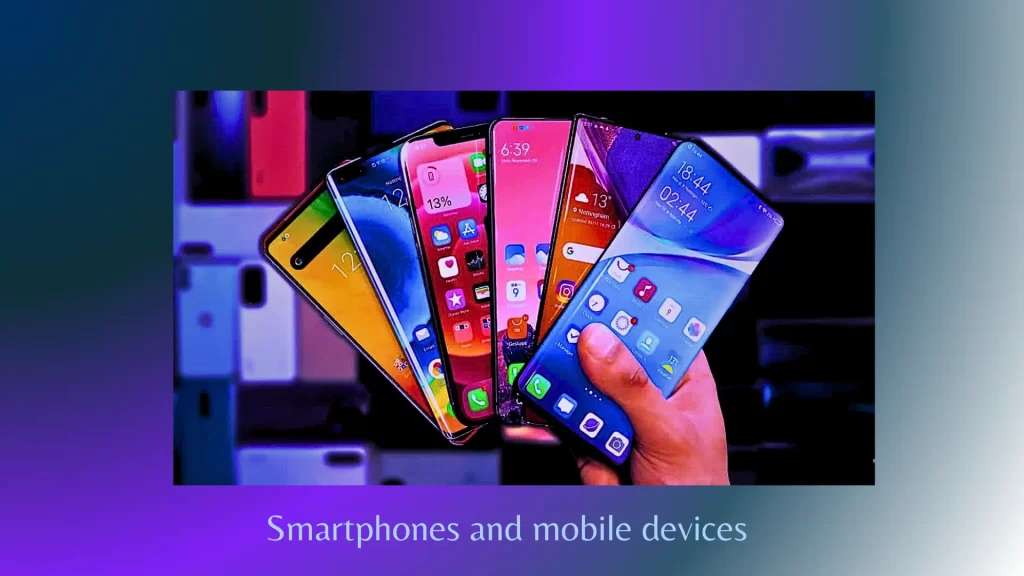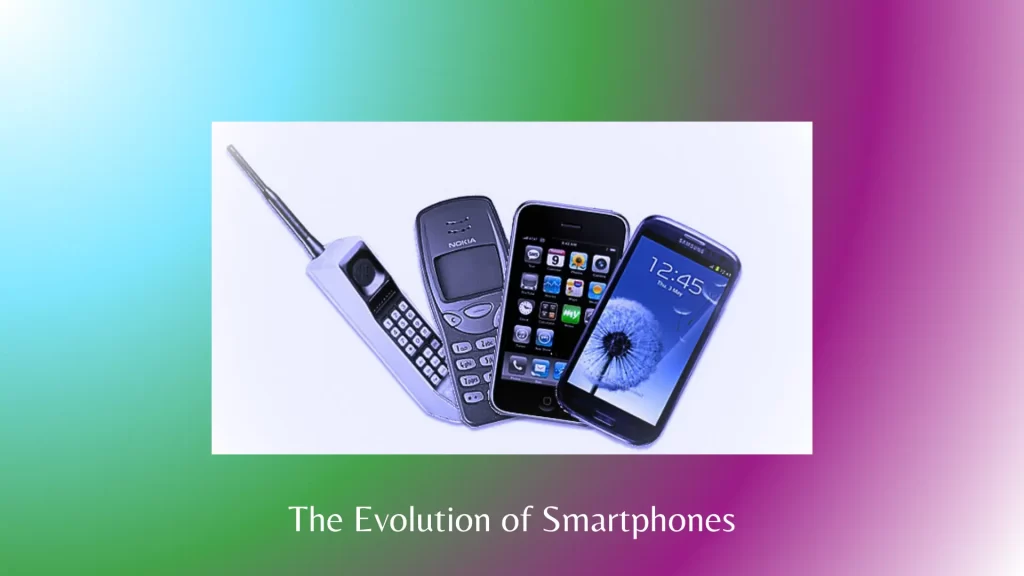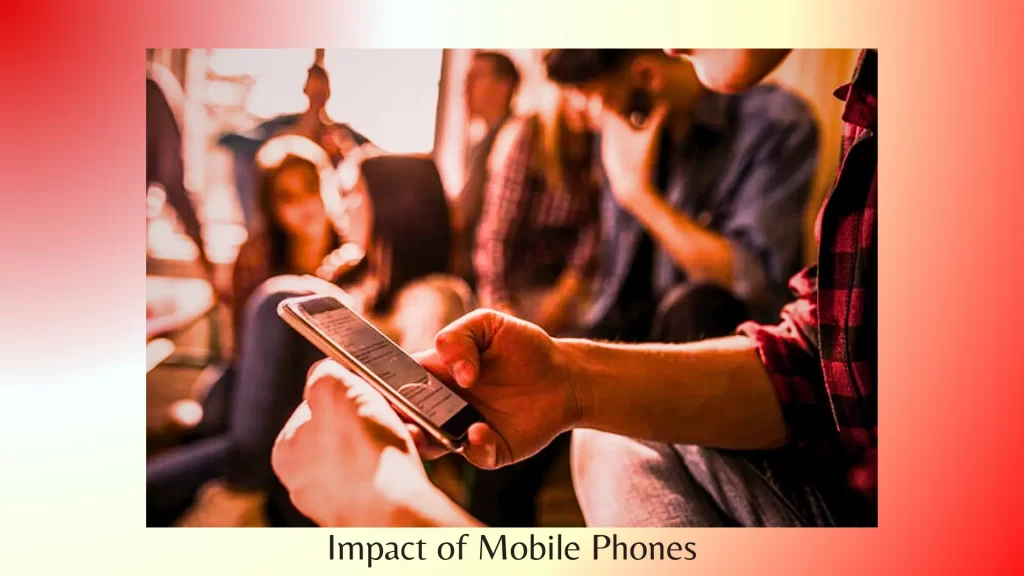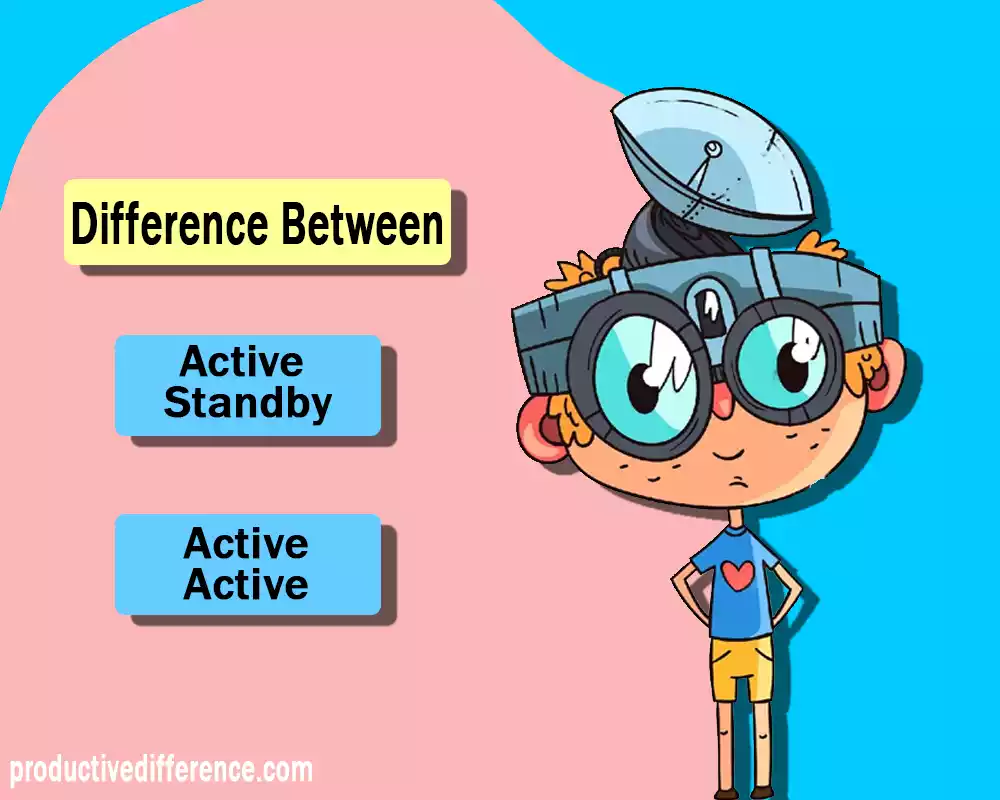An introduction to smartphones and mobile devices

Mobile phones and smartphones have a part in our daily life. This device helps to communicate with others. Mobile phones and Smartphones revolutionized work and entertainment. With their advanced features and capabilities, they have become indispensable tools for modern living. In this article, We will know the evolution of mobile phones and smartphones, and know their impact on daily life and business purpose, etc.
The Evolution of Mobile Phones and Smartphones
The world of mobile technology has undergone a stunning revolution. The development of mobile devices has completely changed the way we communicate, work, and live, from their humble beginnings as simple mobile phones to the sophisticated smartphones we use today. In this article, we will delve into the fascinating journey of mobile and smartphone technology, exploring its key milestones and envisioning its future.
The Evolution of Mobile Phones
Since their beginnings, mobile phones have advanced significantly, evolving from basic voice communication devices to powerful smartphones that have become an integral part of our daily lives. Mobile phones, also known as cell phones. These were used primarily for making calls to multifunctional gadgets. These portable gadgets are now necessary tools for communication, entertainment, productivity, and many other things.
Early Mobile Phones
The first portable cellular mobile phone was created by Motorola engineer Martin Cooper at the start of the 1970s, which marked the beginning of the mobile phone era. This device, known as the Motorola DynaTAC 8000X, was bulky, expensive, and had limited battery life. It could only be used for making voice calls and had no additional features.
Mobile phones have shrunk, gotten cheaper, and expanded in availability throughout time. The introduction of the Global System for Mobile Communications (GSM) standard in the 1990s increases the demand for this device.
The Rise of Feature Phones
The popularity of feature phones started to rise in the 1990s and the early 2000s. These phones offered more advanced features compared to their predecessors. They had alphanumeric keypads, small screens, and limited functionality beyond voice calls. Some of the popular features included text messaging, simple games, calculators, and basic internet connectivity.
Nokia, a Finnish telecommunications company, played a significant role in the feature phone era with its iconic models like the Nokia 3310 and Nokia 5110. These phones were renowned for their robustness, lengthy battery life, and capacity to modify their appearance by adding or removing covers.
The Advent of Smartphones
The advent of smartphones marked the true technological advancement in mobile phones. Smartphones combined the functionality of a traditional mobile phone with advanced computing capabilities, internet connectivity, and a wide range of applications.
Apple revolutionized the smartphone industry by lanch the first iPhone in 2007. The iPhone introduced a revolutionary touchscreen interface, a robust mobile operating system (iOS), and a seamless integration of hardware and software.
Evolution of Operating Systems
With the rise of smartphones, different operating systems emerged to power these devices. Google’s Android operating system became incredibly popular in addition to Apple’s iOS. Android offered an open-source platform that allowed multiple manufacturers to develop smartphones with varying features and price points.
Other operating systems like BlackBerry OS and Windows Phone also has entered the market but they can’t catch the smartphone market till now. Eventually, most manufacturers transitioned to either iOS or Android as their primary operating systems.
Key Features and Advancements
Smartphones continued to evolve with a focus on improving performance, enhancing user experiences, and introducing new features.
Here are some key advancements in mobile phone technology:
- Improved Displays: Mobile phones transitioned from small, low-resolution screens to larger displays with higher resolutions. The introduction of touchscreen technology made interactions more intuitive and allowed for more immersive multimedia experiences.
- Camera Technology: Mobile phone cameras have made great strides in resolution and low-light performance, and features like optical image stabilization and portrait mode have been added. Many smartphones now rival dedicated digital cameras in terms of image quality.
- Internet Connectivity: Mobile phones have become our constant connection to the internet.2G to 3G, 4G, and now 5G networks have provided faster speed of data, smoother video streaming, and better browsing experiences on mobile devices.
- App Ecosystem: The development of app stores like Apple’s App Store and Google Play Store, has revolutionized the way. These stores offer a vast array of applications, ranging from productivity tools to social media platforms and gaming apps.
- Biometric Security: Smartphones now use biometric authentication technologies like fingerprint scanners and face recognition to improve device security and make unlocking the device more convenient.
- Mobile Payments: Users may now make purchases using a variety of mobile payment services like Apple Pay, Google Pay, and Samsung Pay on their mobile phones, which have evolved into digital wallets.
The Future of Mobile Phones
There are no indicators that the development of mobile phones will stop.
The future holds exciting possibilities, including:
- Foldable Displays: Foldable phones, with screens that can be expanded or folded for compactness, are gaining traction. These devices offer larger displays without sacrificing portability.
- 5G Technology: The widespread adoption of 5G networks will bring faster speeds, lower latency, and enhanced connectivity. It will pave the way for innovations in areas like autonomous vehicles, IoT, and immersive virtual experiences.
- Artificial Intelligence: AI-powered features will become more prevalent in mobile phones. Virtual assistants will become smarter and more intuitive, providing personalized recommendations and automating tasks.
- Enhanced Security and Privacy: The development of security features like sophisticated encryption, biometric authentication, and improved privacy settings will remain a top priority for mobile phone manufacturers.
- Advancements in Camera Technology: Mobile phone cameras will continue to evolve, offering higher resolutions, improved low-light performance, and enhanced computational photography features.
Mobile phones have evolved from basic communication tools to powerful smartphones that are now an essential part of our daily lives.
The way we communicate, acquire information, and amuse ourselves has been changed by these portable devices.
The Evolution of Smartphones

Smartphones have undergone a remarkable evolution since their inception. Now that we are aware of how far cellphones have come and how much of an influence they have on our everyday lives.
Early Smartphones
The concept of smartphones can be traced back to the early 1990s when IBM introduced the Simon Personal Communicator. For the first time, a personal digital assistant (PDA) and a mobile phone had similar functionality.
Although considered revolutionary at the time, the Simon was bulky and had limited functionality compared to today’s smartphones.
Rise of Operating Systems
The arrival of powerful operating systems created exclusively for mobile devices marked the major technological advance in smartphones.
Palm OS, Symbian, BlackBerry OS, and Windows Mobile were among the early contenders in the smartphone market.
After all, the smartphone business is being revolutionized by the release of the iOS and Android operating systems by Apple and Google, respectively.
These operating systems offered user-friendly interfaces, seamless app integration, and a vast selection of third-party applications, transforming smartphones into versatile devices capable of fulfilling various needs.
Key Milestones
Let’s explore some of the key milestones in the evolution of smartphones:
- Touchscreen Revolution: One of the major turning points was the introduction of capacitive touchscreen technology. When Apple’s iPhone was introduced in 2007, it helped make touchscreens more commonplace by displacing traditional keyboards with user-friendly, interactive touch-based interfaces.
This invention ushered in a new age of smartphone user experience and design. - App Ecosystem: Smartphones now have access to a wide variety of programs thanks to the development of app shops like Apple’s App Store and Google’s Play Store.
Users could now customize their devices, increase productivity, access social media, play games, and do a variety of other activities by downloading and installing a variety of apps. - Camera Advancements: Smartphone cameras have evolved significantly over the years. Smartphones have evolved from basic low-resolution cameras to high-quality sensors capable of taking beautiful pictures and films, making them the preferred tools for daily photography and filming.
Features like image stabilization, advanced autofocus, and computational photography techniques have further enhanced the camera capabilities of smartphones. - Mobile Internet and Connectivity: As mobile internet technologies have advanced from 2G to 3G to 4G and now 5G, they have fundamentally changed how we access information and maintain connections.
We can access the internet, stream films, use cloud services, and communicate in real-time everywhere thanks to high-speed mobile data networks. - Biometric Security:Smartphones now frequently use biometric identification technologies like fingerprint scanners and face recognition.
- Design and Display Innovations: Innovations in design and display have been made to smartphones, such as the introduction of curved screens, bezel-less displays, and even foldable phones.
. These advancements provide larger screen real estate, better viewing experiences, and more flexibility in form factors.
The Future of Smartphones
As technology continues to advance, the future of smartphones holds exciting possibilities.
Here are some anticipated trends and innovations:
- Artificial Intelligence and Machine Learning: AI and machine learning will play a more significant role in smartphones, enabling smarter virtual assistants, personalized experiences, and improved device performance.
- Internet of Things (IoT) Integration: Integration of the Internet of Things (IoT): Smartphones will serve as the primary control and monitoring platforms for IoT devices, enabling seamless management of our linked appliances, smart homes, and wearable technology.
- Advanced Biometrics and Security: As iris scanning, facial recognition, and other biometric authentication techniques progress, user data and privacy will also be better protected.
- Enhanced Connectivity: The introduction of 5G networks will bring faster data rates, reduced latency, and more dependable connectivity, opening up new possibilities for the Internet of Things, real-time cloud applications, and autonomous cars.
The way we live in the recent years, It has been revolutionized by smartphones which helps to communicate with others and connect with the world. From their humble beginnings as communication devices, smartphones have transformed into versatile tools that integrate various technologies, functionalities, and services into a single device.
What is Mobile Phone?
Mobile phones are also known as cell phones. it is a portable electronic device. It has become a vital part of our lives and making our life more easy in sophistically. From simple voice communication devices, mobile phones have developed into sophisticated smartphones with a variety of functions and functionalities. It is allowing to help us to stay connected with others, and access information.
It makes to easy the way of communication, and also access information.
What is a Smartphone?
Smartphones are portable devices that combine regular mobile phone functionality with cutting-edge computer power. It has a wide range of capabilities and uses that go beyond simple communication, making it a strong tool for a number of jobs and activities.
Smartphones have ingrained themselves into every aspect of our everyday lives because to their cutting-edge capabilities, user-friendly interfaces, and expansive app ecosystems.
The Key Difference between Mobile Phones and Smartphones
There are significant differences between mobile phones and smartphones in terms of their functionality, features, and capacities, despite the fact that the terms “mobile phone” and “smartphone” are sometimes used interchangeably.
Basic Communication vs. Advanced Computing
Mobile phones, also known as feature phones, primarily serve the purpose of basic communication. They provide essential features like voice calls, text messaging, and limited internet access. Mobile phones are designed primarily for communication purposes and may have a limited range of additional functionalities.
On the other hand, smartphones go beyond basic communication and offer advanced computing capabilities. They integrate powerful processors, ample memory, and sophisticated operating systems that enable multitasking, running complex applications, and handling various tasks simultaneously. Smartphones are essentially pocket-sized computers that can perform a wide range of functions beyond traditional communication.
Operating Systems and Apps
Mobile phones typically operate on proprietary operating systems specifically designed for the respective device. These operating systems are often limited in functionality and offer a set of predefined features and applications. Customization options and access to additional apps are limited or nonexistent.
In contrast, smartphones run advanced operating systems like iOS, Android, or Windows Mobile. These operating systems provide a vast array of features, customization options, and access to extensive app ecosystems. From app stores, users may download and install a broad variety of programs, giving the device more versatility and customisation.
User Interface
Mobile phones typically have a simpler user interface with physical buttons or keypads for input and navigation. The screen size is often smaller, and the user interaction is primarily through physical buttons or a limited touch interface.
On the other hand, touchscreens are typically used as the main form of interaction in smartphones. The touchscreens allow for more intuitive and interactive navigation, typing, and control of applications. This offers a more user-friendly and immersive experience, enhancing usability and convenience.
Internet Connectivity and Multimedia Capabilities
Mobile phones generally offer limited internet access through basic browsers and may support only 2G or 3G networks. The browsing experience is often basic, and multimedia capabilities may be limited.
Smartphones, on the other hand, provide advanced internet connectivity options. They support 4G or 5G high-speed mobile data networks, making surfing, streaming, and downloading more quickly. Smartphones also offer multimedia features like high-resolution cameras, media playback, and the ability to run various multimedia-rich applications.
Additional Features and Functionality
The variety of extra features and capabilities that smartphones provide is another obvious distinction between mobile phones and smartphones. While mobile phones may have basic features like alarm clocks, calculators, and simple games, smartphones provide a broader range of capabilities.
.With capabilities like voice assistants (like Siri and Google Assistant), virtual keyboards for text entry, and sophisticated calendar and reminder systems, smartphones may serve as personal digital assistants. In addition to supporting a broad range of audio and video formats and giving access to streaming services, they may function as portable media players.
Additionally, GPS, accelerometers, and gyroscopes are typically included into cellphones, allowing for location-based services, fitness tracking, augmented reality apps, and more. These additional features enhance the overall user experience and make smartphones versatile devices for various purposes.
Price Range and Availability
Mobile phones often have lower prices and are more accessible to a larger variety of consumers due to their more basic features. They are often targeted at individuals who prioritize basic communication needs and are looking for a budget-friendly option.
On the other hand, smartphones are available at a broad variety of price ranges to accommodate various consumer needs and tastes. Budget or mid-range smartphones strike a compromise between price and usefulness whereas high-end smartphones with the newest technology and sophisticated features are often more expensive.
The availability of mobile phones and smartphones also varies. Mobile phones, with their simpler functionality, are often widely available in retail stores, online platforms, and even local marketplaces. Smartphones, with their advanced features, may have more restricted availability, especially for certain brands or models that are exclusive to specific regions or carriers.
The main distinction between mobile phones and smartphones is found in their features, capacities, and functioning. Mobile phones focus on basic communication, while smartphones offer advanced computing power, extensive app ecosystems, touch-based interfaces, internet connectivity, and multimedia capabilities. The additional features, customization options, and advanced operating systems make smartphones a powerful tool for various tasks, from communication to productivity, entertainment, and beyond.
Comparison chart between Mobile Phones and Smartphones
| Comparison | Mobile Phone | Smartphone |
|---|---|---|
| Functionality | Primarily basic communication | Advanced computing capabilities and features |
| Operating System | Proprietary | iOS, Android, Windows Mobile, etc. |
| App Ecosystem | Limited or nonexistent | Vast app ecosystems with extensive options |
| User Interface | Physical buttons or keypads | Touchscreen-based interface |
| Internet Connectivity | Basic internet access (2G or 3G) | High-speed internet access (4G or 5G) |
| Multimedia Capabilities | Limited multimedia features | Advanced multimedia playback, cameras, and apps |
| Additional Features | Basic features like alarm clocks, calculators | Advanced features like voice assistants, GPS, sensors |
| Price Range | Generally more affordable | Varies widely, ranging from budget to high-end |
| Availability | Widely available | Availability may vary, including region-specific models |
Importance of Mobile Phones and Smartphones
Mobile phones and smartphones have become integral parts of our lives, playing crucial roles in communication, information access, and overall connectivity. Let’s investigate the significance of these tools in the modern world.
Communication and Connectivity
By enabling us to keep in touch with one another wherever we are, mobile phones, particularly smartphones, have transformed communication. They allow us to interact via numerous messaging applications, voice calls, and text messages. Mobile phones have made communication more simple and accessible, whether it’s connecting with coworkers for business or keeping in contact with family and friends.
Access to Information
Particularly with smartphones, we have immediate access to a wealth of data. We can easily discover answers to our inquiries, obtain news updates, investigate a variety of interests, and keep educated about the world around us thanks to internet connectivity and search engines at our disposal. Mobile phones have essentially become portable information hubs, empowering us with knowledge and enabling us to make informed decisions.
Productivity and Efficiency
Smartphones offer a range of productivity tools and applications that enhance our efficiency and help us manage our tasks effectively. From calendars and reminders to note-taking apps and project management tools, smartphones enable us to stay organized, set goals, and increase our productivity. Smartphones have completely changed the way we work and cooperate because to their capacity to access emails, documents, and business-related apps while on the road.
Entertainment and Multimedia
Mobile phones, especially smartphones, provide us with various entertainment options. On our gadgets, we may view videos, play games, stream movies and TV episodes, and listen to music. Smartphones have excellent cameras as well, enabling us to record images and movies and share our experiences with others. They have become our go-to devices for capturing memories, enjoying multimedia content, and engaging in recreational activities.
Access to Services and E-commerce
Mobile phones and smartphones have opened up new avenues for accessing services and engaging in e-commerce. We can access numerous on-demand services, order takeout, reserve a cab, buy online, and manage our accounts via smartphone applications. Mobile payment options have made transactions more convenient, and the ability to access services and make purchases anytime anywhere has transformed the way we interact with businesses and access essential services.
Social Connectivity and Networking
Mobile phones, especially smartphones, have revolutionized social connectivity. Despite physical distance, we can communicate with friends, family, and communities via social media platforms and messaging apps. .We may converse, exchange experiences, images, and updates, and maintain contact with our social networks. Mobile phones have become powerful tools for building and maintaining relationships in our personal and professional lives.
Mobile phones and smartphones are incredibly important in our daily lives. They have transformed communication, providing access to information and services, enhanced productivity, and revolutionized entertainment and social connectivity. As these devices continue to evolve and offer new features and capabilities, their importance and impact on our lives are likely to increase further.
Daily Life Impact of Mobile Phones and Smartphones

Our everyday lives have been profoundly impacted by mobile phones and smartphones, which have revolutionized the way we interact with others, communicate, and access information. Let’s explore the significant impacts these devices have made in our day-to-day lives.
Communication Revolution
Mobile phones and smartphones have transformed the way we communicate. We can easily connect with friends, family, and colleagues through voice calls, text messages, and various messaging apps. Communication has become more convenient, immediate, and accessible, enabling us to stay connected with others regardless of our location.
Instant Access to Information
Smartphones have become our portable information hubs. With internet connectivity and search engines readily available, we can instantly access a vast amount of information on any topic. From quick answers to trivia questions to in-depth research for work or personal interests, mobile phones have empowered us with knowledge and made information readily available at our fingertips.
Enhanced Productivity
Smartphones offer a range of productivity tools and applications that help us stay organized and efficient. With calendar apps, task managers, note-taking apps, and email access, we can manage our schedules, tasks, and work-related activities more effectively. Smartphones have become essential tools for professionals, allowing them to work remotely, stay connected, and collaborate on the go.
Entertainment and Media Consumption
Mobile phones and smartphones have revolutionized entertainment and media consumption. We can stream music and videos, play games, and access a wide range of multimedia content directly on our devices. Social media apps provide a platform for sharing experiences, photos, and videos with friends and followers. Smartphones have become our go-to devices for entertainment and a source of relaxation in our daily lives.
E-commerce and Online Services
Mobile phones have transformed the way we engage with businesses and access services. E-commerce platforms and mobile apps allow us to shop online, order food, book services, and manage our finances conveniently. Mobile payment options have made transactions more accessible and more secure. Mobile phones have become indispensable for accessing online services and making purchases, saving us time and expanding our opportunities.
Social Connectivity and Networking
Smartphones have greatly impacted social connectivity and networking. Social media platforms and messaging apps enable us to connect with friends, family, and communities worldwide. We can share updates, photos, and videos, engage in conversations, and stay connected with our social networks. Smartphones have become a vital tool for building and maintaining relationships in our personal and professional lives.
Navigation and Location Services
Mobile phones with GPS capabilities have revolutionized navigation and location services. We can access maps, get real-time directions, and discover nearby places of interest. Whether navigating through unfamiliar cities or finding the nearest restaurant, mobile phones have become essential tools for seamless navigation and exploring our surroundings.
Mobile phones and smartphones have had a significant impact on our daily lives. They have transformed communication, provided instant access to information, enhanced productivity, and revolutionized entertainment and social connectivity. These tools have become crucial tools that have revolutionized the way we live, work, and communicate with our surroundings.
Importance of Mobile Phones and Smartphones in Business
Mobile phones and smartphones have become indispensable tools in the business world, offering numerous benefits and transforming the way businesses operate. Let’s explore the importance of these devices in a business context.
Communication and Connectivity
Mobile phones and smartphones enable seamless communication and connectivity for businesses. They allow employees to stay connected with colleagues, clients, and partners, regardless of their location. Voice calls, text messages, emails, and various messaging apps facilitate quick and efficient communication, fostering collaboration and ensuring timely responses.
Remote Work and Flexibility
Smartphones play a crucial role in facilitating remote work and providing flexibility to employees. With the advancement of mobile technology, employees can access work-related emails, documents, and applications on their smartphones, allowing them to work from anywhere. This flexibility enhances productivity and enables businesses to adapt to evolving work styles and demands.
Access to Business Tools and Applications
Smartphones serve as portable offices, providing access to a wide range of business tools and applications. From project management and collaboration apps to document editing and customer relationship management systems, smartphones empower employees to work efficiently on the go. These tools enhance productivity, streamline processes, and support effective decision-making.
Instant Information and Decision-Making
Mobile phones and smartphones offer immediate access to critical information, enabling timely decision-making. Business professionals can access real-time market data, financial information, industry news, and competitor insights. This access to information empowers businesses to make informed decisions, seize opportunities, and stay competitive in a fast-paced business environment.
Marketing and Customer Engagement
Mobile phones and smartphones have transformed marketing strategies and customer engagement for businesses. Mobile marketing techniques, such as SMS marketing, mobile apps, and push notifications, allow businesses to reach their target audience directly and personalize their messaging. Mobile devices also enable businesses to engage with customers through social media platforms, providing a platform for feedback, and reviews, and building customer loyalty.
Mobile Payments and E-commerce
The integration of mobile payment solutions and e-commerce platforms has revolutionized business transactions. Mobile phones facilitate seamless and secure payment options, allowing businesses to accept payments from customers anytime, anywhere. This convenience enhances customer satisfaction and expands business opportunities by tapping into the growing digital economy.
Data and Analytics
Mobile phones and smartphones generate vast amounts of data that can be utilized for business insights and decision-making. Businesses can analyze user behavior, customer preferences, and trends to gain valuable insights into their target market. These insights help businesses optimize their products, services, and marketing strategies, driving growth and profitability.
Future Prospects of Mobile Phones and Smartphones
Mobile phones and smartphones have already made a significant impact on our lives, but what does the future hold for these devices? Let’s explore some of the potential developments and trends we may expect in the coming years.
Advancements in Technology
As technology continues to advance at a rapid pace, we can anticipate significant improvements in mobile phones and smartphones. This includes advancements in processing power, battery life, display quality, camera capabilities, and connectivity. Future devices may feature foldable screens, augmented reality (AR) and virtual reality (VR) integration, and advanced biometric security features.
5G Connectivity
The deployment of 5G networks will revolutionize mobile connectivity, offering faster speeds, lower latency, and increased network capacity. This will enable new possibilities for mobile applications, including seamless streaming, real-time cloud computing, and enhanced Internet of Things (IoT) connectivity. 5G will transform industries such as autonomous vehicles, smart cities, telemedicine, and more.
Artificial Intelligence (AI) Integration
AI integration in mobile phones and smartphones will bring about exciting advancements. AI-powered virtual assistants will become even more intelligent, providing personalized recommendations, performing tasks on our behalf, and adapting to our preferences. AI algorithms will optimize device performance, improve camera capabilities, and enhance security features.
Mobile Health and Wellness
Mobile phones and smartphones will continue to play a significant role in the health and wellness sector. We can expect more advanced health monitoring features, including sensors for tracking vital signs, sleep patterns, and fitness activities. Mobile apps and platforms will provide personalized health insights, remote healthcare services, and seamless integration with wearable devices.
Enhanced User Experience
Future devices will focus on delivering exceptional user experiences. This includes advancements in user interfaces, intuitive gesture controls, and enhanced voice recognition. Augmented reality (AR) and virtual reality (VR) will offer immersive experiences for gaming, entertainment, and virtual meetings. The integration of haptic feedback and advanced audio technologies will further enhance user interactions.
Continued Integration of IoT
Mobile phones and smartphones will continue to be central devices in the expanding ecosystem of the Internet of Things (IoT). They will serve as hubs for controlling smart homes, interacting with connected devices, and managing IoT-enabled systems. The seamless integration of mobile devices with various IoT applications will further enhance convenience and connectivity in our daily lives.
Last opinion
Mobile phones and smartphones have revolutionized the way we communicate, access information, and conduct business. They have become integral parts of our daily lives, connecting us with others, providing instant access to information, enhancing productivity, and transforming various industries. As these devices continue to evolve, their impact and importance will only increase, shaping the way we live and interact in an increasingly connected world.


